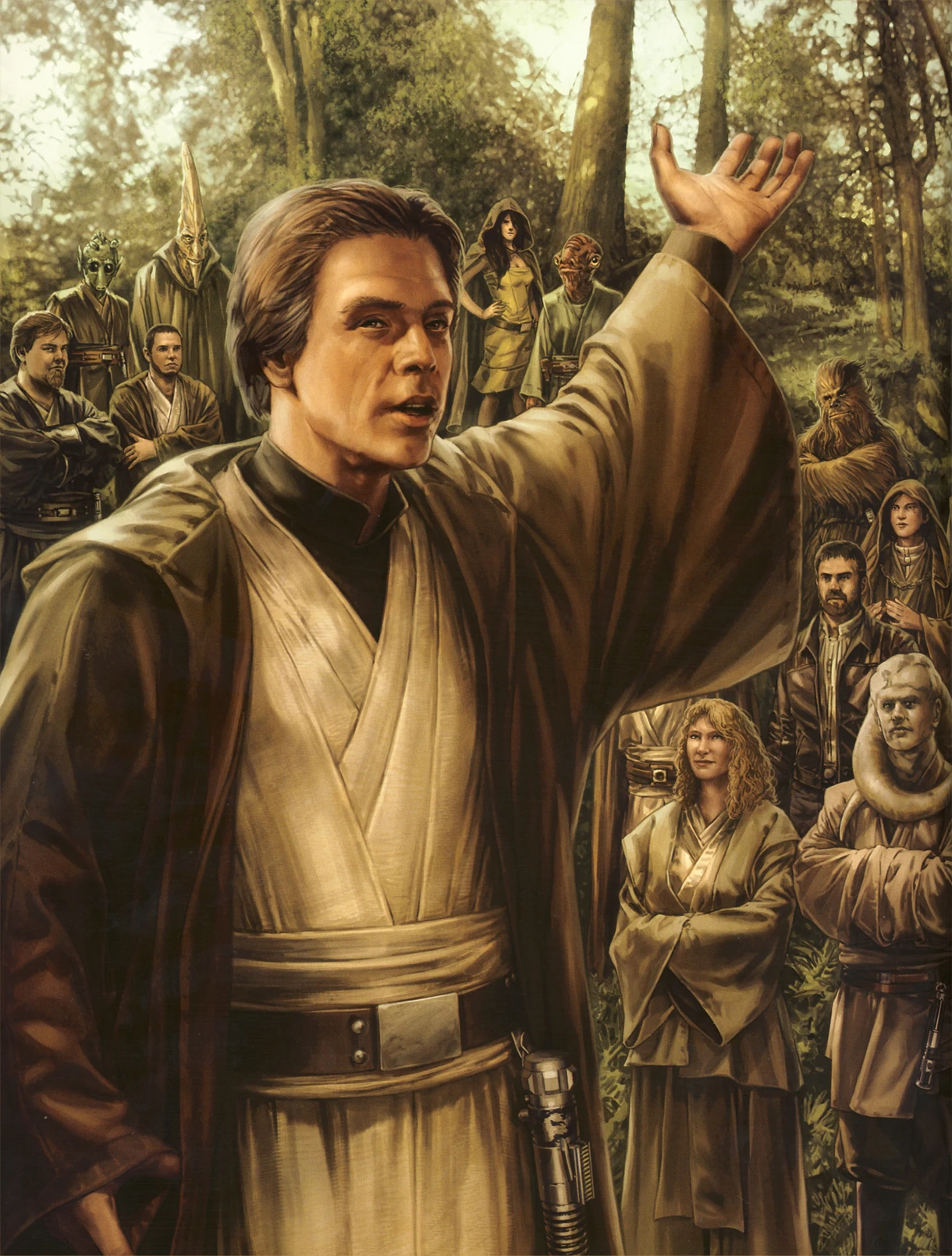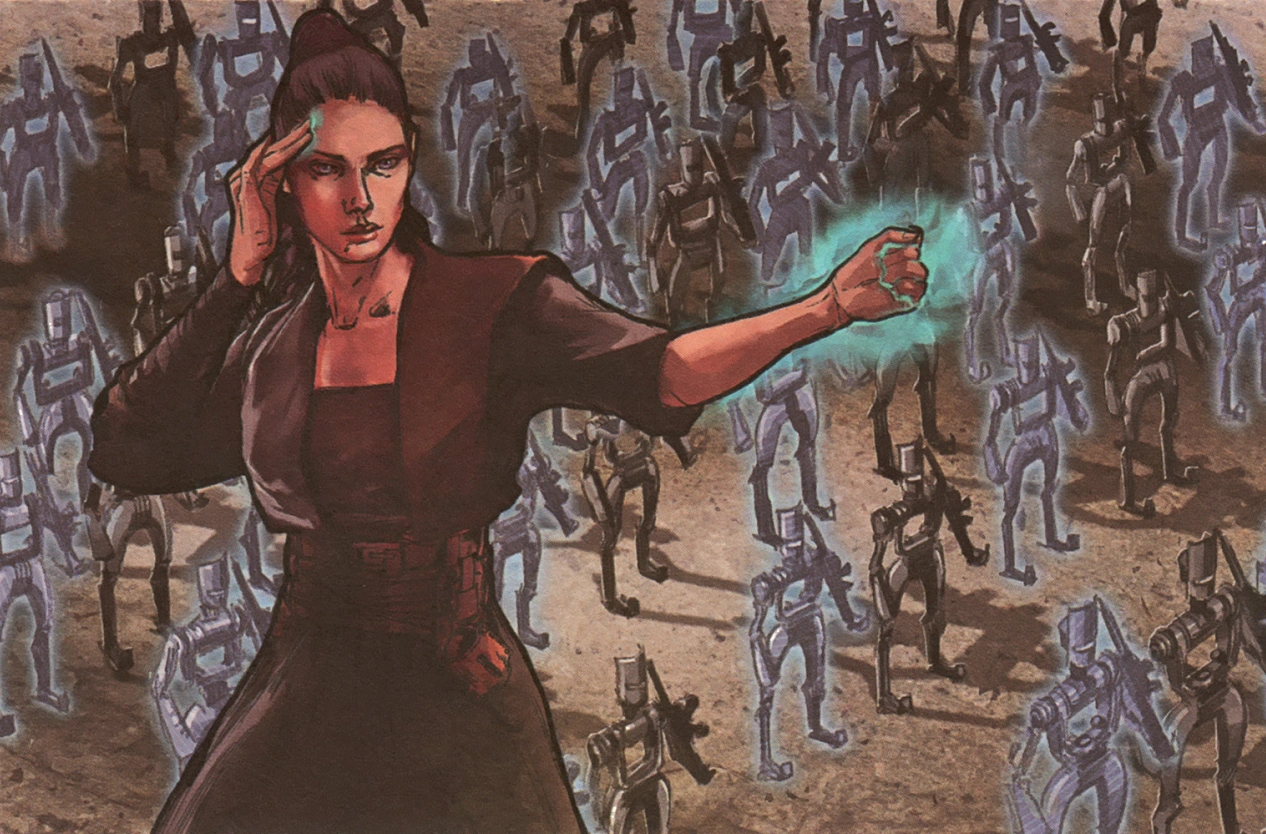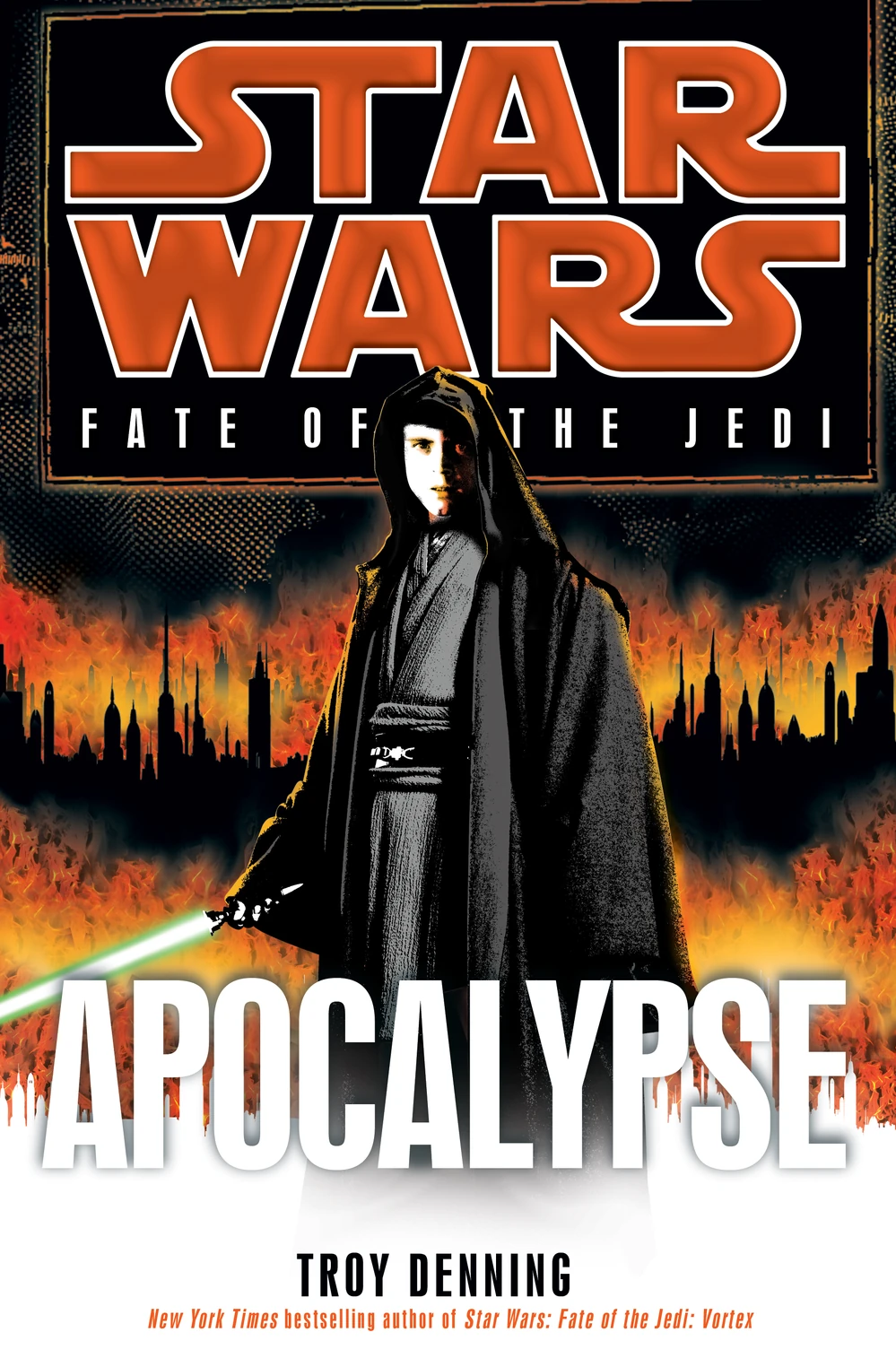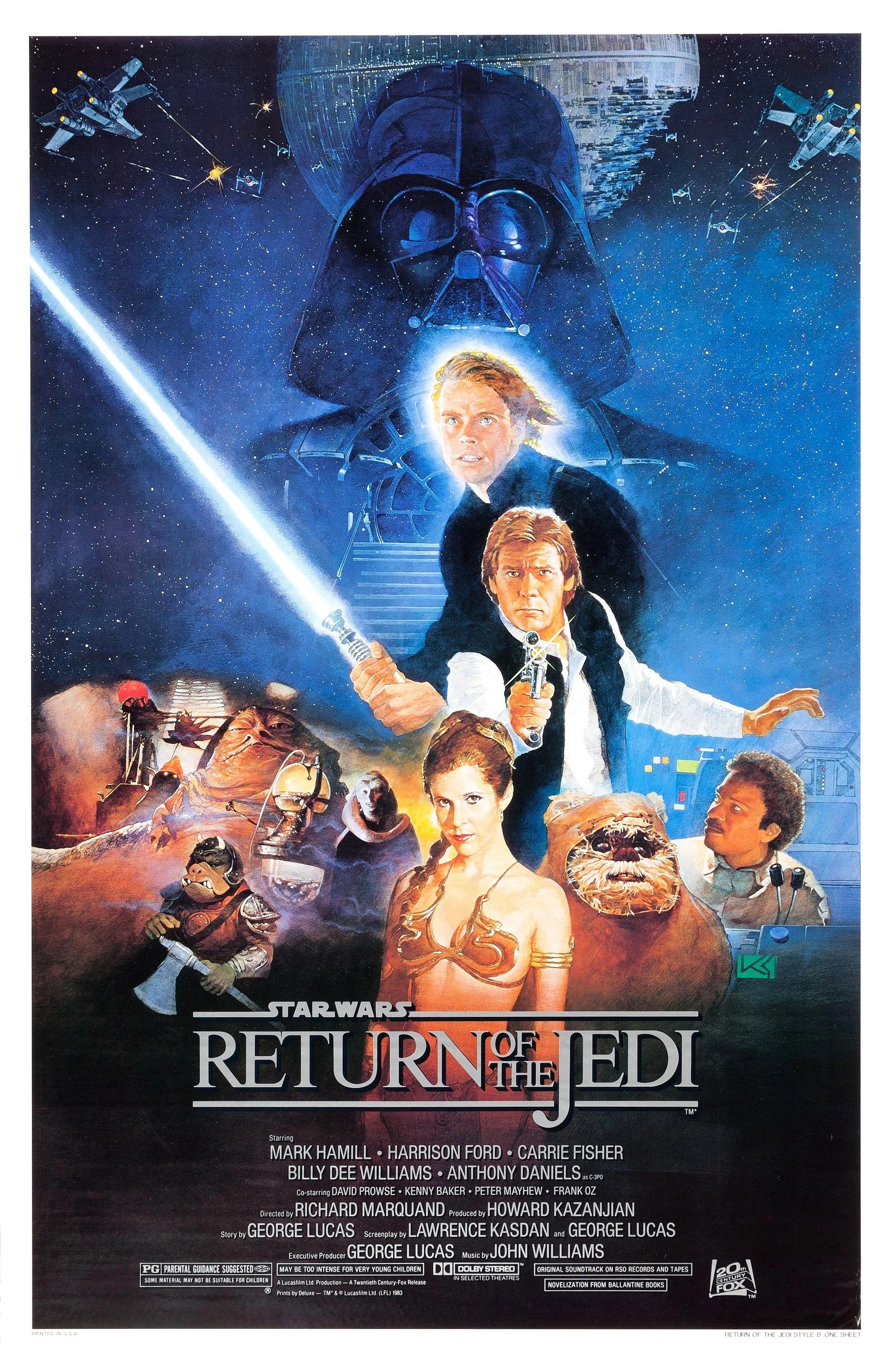Welcome back, everyone! I return with another Star Wars related blog, this time not relating to opinions regarding the movies, but rather bringing to light certain questions regarding the current canon and me attempting to answer them.
The Star Wars Expanded Universe, otherwise known as the Legends Canon, refers to every piece of media, be it in the form of books, animated movies, comics or video games that existed outside of the main six movies up until late 2012. These stories covered essentially everything that the six movies couldn't, covering several millennia of Star Wars history, establishing entire stories and races outside of the Skywalker saga, and providing a continuation of the story showing what happened after the events of Return of the Jedi, covering several generations of Skywalker descendants.
For decades, this is what the fans saw as what happened outside of the movies, and for many, that continuity, containing hundreds of books and comics creating an established timeline, was destroyed by Disney, much to their dismay. However, one needs only pay close attention to the finer details to see that all is not lost. There are actually tons of cameos, references, and namedrops in Disney's new canon that allude to the Legends Canon, suggesting that at the very least several key events in the story still happen and a few significant characters and themes from it still exist, if not all or most. Let's take a look, shall we?
The New Jedi Order
In the Legends Canon, Luke Skywalker, after the Battle of Endor and defeat of the Emperor and Darth Vader, began searching for old Jedi temples and studied their artifacts, or at least what remained of it after the Empire destroyed many of it. He learned of the Old Republic through ancient documentations and Holocrons, even traveling to Sith planets to learn their history and philosophy. With this gathered knowledge, along with the teachings he previously received from Obi-Wan and Yoda, he formed the New Jedi Order to pass down his knowledge to other force sensitives across the galaxy.
Recall that in The Force Awakens, it is said that Luke, sometime between the events of RotJ and TFA, went looking for the old Jedi temples. Han even mentions the New Jedi Order by name.
EU Abilities Used in Episode 7 and 8
(Section contains spoilers for TLJ)
The EU also established a lot of new imaginative force abilities that the movies did not portray. One would imagine that there would be more to the force than sensing, moving objects, and mind tricks, and they would be right. Far more advanced techniques include Jedi Spacefolding, imprinting memories into objects and people (which is theorized to have been used on Luke's blue lightsaber, hence why Rey has the visions when she finds it), and Force Projection.
Force Projection, as the name suggests, is an ability that allows its user to project oneself to another location, enabling them to interact with objects as if they were there. More powerful users of this ability can manifest physical objects or weapons such as lightsabers that are seemingly as effective as real ones. The user can even move the projection to other places instantaneously to appear as they they are teleporting, or cause the projection to phase through solid objects or become intangible. Yes, contrary to popular belief Luke's "new" ability used towards the end of The Last Jedi is not new at all, and was used quite frequently by Luke himself in the Legends Canon.
Greivous's Coughing in Revenge of the Sith
You may recall that before Episode III: Revenge of the Sith, Cartoon Network featured an animated miniseries tie-in to promote the movie: Clone Wars. In this animated series, Mace Windu uses Force Crush (another EU ability) on Greivous, causing his chest to collapse. As a result, in Episode III General Greivous has a profuse cough, and this moment in Clone Wars is the official reason as to why. Because this was long before Disney's interference in the Star Wars franchise, Clone Wars is considered part of the Legends Canon. Since Greivous's coughing is clearly a result of Mace Windu's Force Crush, and because Revenge of the Sith is one of the numbered movies that Disney is still following the continuity of, this cements at least some events of the EU in Disney's continuity long before they bought the rights.
Darth Revan and Darth Bane in Star Wars: The Clone Wars
Reminder that The Clone Wars and Star Wars Rebels are part of the Disney Canon, since the show aired in 2014, after the rights were handed over to Disney, and characters from both have appeared in Disney Canon movies, such as Saw Gerrera's appearance in Rogue One.
Now that we got that out of the way, allow me to explain the significance of these appearances. Revan and Darth Bane are characters who appeared in the Knights of the Old Republic video games. Roughly 4000 years before the original trilogy, the Sith were a tribal race that killed one another for power, creating constant in-fighting and near-extinction of the race. Revan was one of the first Jedi to join the Sith, and while there introduced Jedi philosophy and established order to the once violent and barbaric Sith race, saving them from dying out. Despite being called Darth Revan, he considered himself neither Jedi nor Sith, and was one of the first to weild the rare purple lightsaber, which signified its user's balance in light and dark sides, and dual-weilded it along with a red Sith saber. He recorded his wisdom into a holocron, which was many millenia later possessed by Palpatine, who thanks to heeding Revan's teachings lead an Empire that was successful for twenty plus years. His philosophy was adopted by many future Sith as well as the Grey Jedi (which is what Ahsoka became in Rebels) and become the front-runner for modern Sith philosophy and the Rule of Two established by Darth Bane.
This is where Bane expanded on Revan's knowledge, and where the Sith became the true antithesis to the Jedi. Bane believed that it was the right of the strong to exact their power over the weak, that peace is an illusion, and that "evil" was term used by the weak to discredit the actions of the strong as they exerted their rightful dominance. He also conceived the Rule of Two, a rule of thumb for Sith masters to never take more than one apprentice at a time. He also advised that an apprentice would always seek to destroy their master. If they succeed, they become the new Sith master. If they fail, the master further exerts his dominance, or at least until he is eventually replaced or killed. Bane believed that this was the best way to strengthen and preserve the Sith way, and is referenced by Yoda at the end of The Phantom Menace. It also foreshadows Vader killing the Emperor in Return of the Jedi.
Now, Darth Bane in The Clone Wars doesn't necessarily canonize all of KOTOR, but establishing him as an important historical figure in the Star Wars saga in the Disney canon does have a lot of implications that come along with it, and his dialogue with Yoda in this scene does allude to some events, albeit vaguely. Also, what appears to be Darth Revan, does appear in the same episode, but he's only on screen for like two seconds and not nearly made up to be as big a deal as Darth Bane.
However...
Darth Revan does make a legitimate appearance in the series... as a deleted scene. It was removed because it was decided that it would make no sense for Sith to appear before The Son to offer him guidance since The Son was basically the dark side itself. But this doesn't necessarily mean he doesn't exist in the Star Wars Disney canon, only not in this scene, and it was a plan by the Clone Wars team, including George Lucas himself, to establish Revan and Bane in the series rather early on.
And yes, that was Mark Hamill voicing Darth Bane. I'll let you bask in that awesomeness for a second.
Oh, speaking of The Ones in The Clone Wars...
The Ones in canon
Yeah, I failed to mention that The Clone Wars is a GOLD MINE of EU content, and it would be impossible to go over all of them in such a short time. But The Ones and Darth Bane are definitely the biggest inclusions.
In the Clone Wars episodes, Anakin, Obi-Wan, and Ahsoka encounter The Ones, physical manifestations of the aspects of the Force. The Daughter represents the light side, The Son the dark side, and the Father the balance between the two.
In the EU, Luke encounters them roughly fifty years later, after one becomes added to the family of The Ones, Abeloth the Mother. Where the Father represents balance and unification between two forces, Abeloth represents the chaos, schism, and constant war between the two. Luke gathers every force sensitive he can to warn them and prepare for the threat of Abeloth, even enlisting the help of Sith. It was this unification of the dark side and the light, along with the dagger seen in The Clone Wars that was used to kill the Father in the episode, that subdued Abeloth and ensured the future of both Jedi and Sith, and perhaps the universe itself.
The Downed Star Destroyers on Jakku
There is a book called The Legends of Luke Skywalker featuring several crew members sharing stories about Luke Skywalker, similar in a way to the Batman the Animated Series episode, Almost Got 'im. In one of these stories, after viewing a Wanted hologram of Luke and experiencing strange visions, an Imperial officer on board a Star Destroyer felt the entire ship being pulled down to the surface of Jakku, as if by "a giant invisible hand". It is implied that this is the same ship seen in The Force Awakens.
Boba Fett is Still Alive
The digestion process of a Sarlac takes over 1000 years (with the swallowed-whole prey being kept alive for part of it), and Boba Fett's Mandalorian armor would give him more than enough protection. This means that he isn't dead as of his last appearance in Return of the Jedi after Han Solo knocked him into the Sarlac, and should canonically still be alive.
In the EU, he cuts himself out to fight another day. This isn't entirely out of the question, since Boba would still be alive even now. The LucasFilm Story Group refers to him as "Shrodinger's Fett", and that he is "simultaneously both dead and alive" in the sense that he's kind of set off to the side for now until a story calls for him to be brought back, if at all. That's no confirmation that all his stories are canon, but they do consider the possibility.
EU Easter Eggs in The Last Jedi
There were TONS of easter eggs and nods to the Expanded Universe in TLJ if one pays enough attention, included but not limited to Han Solo's golden dice he used to win the Millenium Falcon in a Legends comic (which appeared breifly in A New Hope and will appear again no doubt in the Han Solo movie) and references to The Old Republic, such as a lightsaber believed to have belonged to Darth Revan.
The 30-year gap
Sure, Disney did do some retconning, but it was mostly the finer details of the Legacy of the Force story arc that was tweaked, certainly not the complete eradication of an entire continuity that the fans viewed it as. I see the new movies as simply newer additions to an already expansive and immersive universe, and I am intrigued to see what we get next.
I am Hero's Shade and I will see you all next time.








